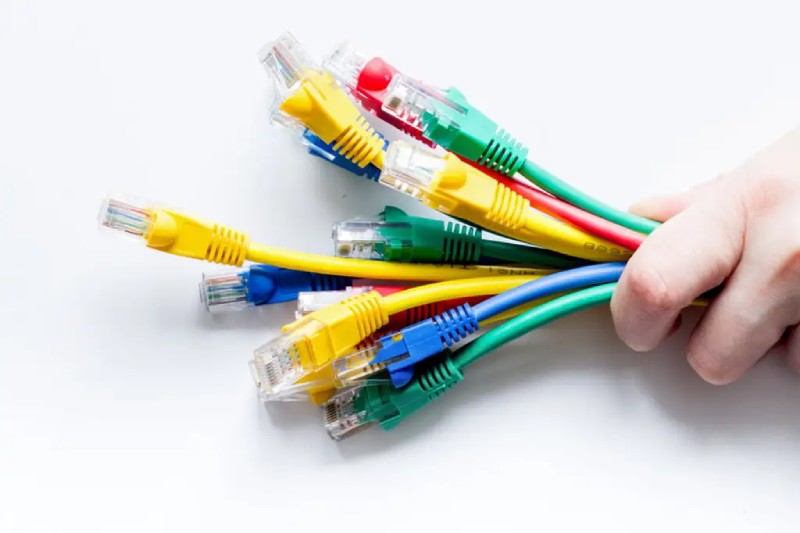How to find the right ethernet cables for the office

Reliable and high-speed Internet is the cornerstone of every modern office environment, whether it is staying in touch with international coworkers or sending proofs to a client. To ensure data transfer is efficient, choosing the right ethernet cables for the office is paramount. However, many office managers are not IT specialists, and it may be challenging to sort through the myriad of options available to find the one that will work best for their environment.
In this guide, we will walk you through a brief introduction to some of the most common types of ethernet cables available on the market. We will then go through several key factors you can consider making an informed decision. If you are an office manager looking to set up a new office or a business partner hoping to take your company to the next level, keep reading to find out how to keep your office connected and productive.
Introduction to ethernet cables
Ethernet cables are physical cables that connect devices within a local area network and facilitate data transmission. Though many people rely on WiFi (wireless connections) to connect to the Internet, ethernet cables are widely used in offices to establish reliable and high-speed network connections.
Common types of ethernet cables found in offices
Cat 5e
Category 5e cables support data transmission with speeds of up to 1 gigabit per second (Gbps), and they are suitable for most standard office needs. They are also cost-effective, and they can be found in most retailers and suppliers.
Cat 6 and cat 6a
Category 6 and 6a cables are ethernet cables that have a higher performance capacity than Cat 5 cables. Cat 6 and Cat 6a cables can handle data transmission of up to 10 Gbps over varying distances, with Cat 6a having superior shielding compared to Cat 6.
Broadly speaking, Cat 6 cables are great for shorter distances, while Cat 6a cables are great for longer distances. These high-performance cables are great for offices that require a large bandwidth and fast data transmission, such as multimedia production environments or data centres.
Cat 7
Category 7 cables offer superior performance and increased shielding compared to the previously mentioned Cat 5, 6, and 6a cables. Cat 7 cables can facilitate data transmission of up to 10 Gbps over long distances, and they have reduced signal interference possibilities. Cat 7 cables are commonly used in environments with high EMI, such as industrial or medical facilities. EMI stands for Electromagnetic Interference, and it is a disturbance generated by external sources such as medical devices and equipment that can affect electrical circuits.
Cat 8
Category 8 cables have gained popularity in recent years, due to its extremely high data transmission speeds and bandwidths. They can facilitate data transmission of up to 40 Gbps at significantly longer distances of up to 30 metres (98 feet). They also have further improved shielding to minimise EMI and crosstalk, and they are popular in environments that require extremely high performance, such as server rooms and data centres.
Considerations when choosing the right ethernet cables for the office
With several types of ethernet cable options available, there are some factors to consider when picking out the right one for your office environment. We will walk you through them below.
Speed and Bandwidth requirements
Firstly, you must consider the bandwidth requirements for your office network. Consider factors such as the number of users there will be in the network, the kind of applications they will be using, and whether there is a need for multimedia streaming or video conferencing. If you are in a small office that does not require intensive use of the Internet, you may opt for Cat 6 or 6a ethernet cables that offer a relatively good and stable connection.
Installation requirements
You should also consider installation requirements based on the layout of your office, its size, and the overall environment. If you are working in a data centre or an area where there will be significant EMI, you may want to opt for cables with better shielding and stronger performance capacity, such as the Cat 7 & 8 cables. You may also want to consider the required cable length to keep all your desktop computers and laptops connected, depending on your office size and where electrical outlets are.
It is important to note that Cat 8 cables have specific connector requirements due to their exceptionally high performance. They are not backward compatible with lower category cables, and therefore, they are less commonly seen in the workplace unless required.
Other network components
Additionally, you should consider any other network components that you may want to place in your office environment. Ethernet cables are just one component of any network infrastructure, and you should think about your need for switches, routers, and connectors to complete the setup.
Cost considerations
Finally, you must consider your budget, as well as the cost performance balance. Ethernet cables of higher categories will cost more, and it is essential that you think of their installation in a long-term perspective.
In closing
Ethernet cables are a great way to provide high-speed and reliable network connectivity in the workplace, and they are essential in every modern office environment. However, they are not the only part of the network infrastructure, and buyers should consider other network components such as routers and switches before deciding on a cable type. They should also consider performance capacity and bandwidth requirements before settling on a cable. Finally, it is best to consider network setups from a long-term point of view to future-proof the office network as technology advances.